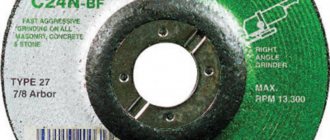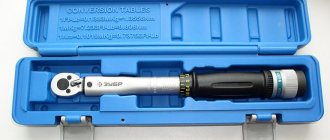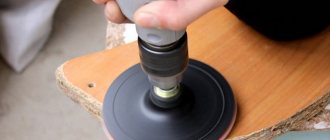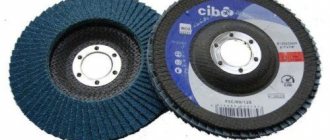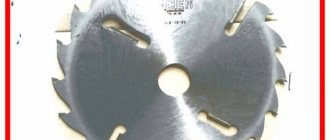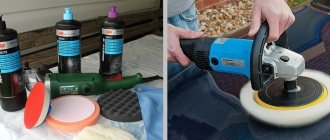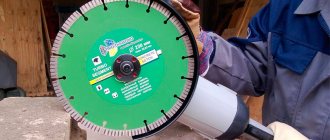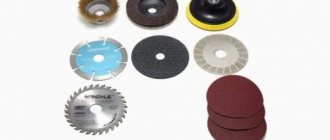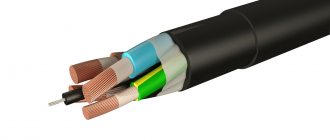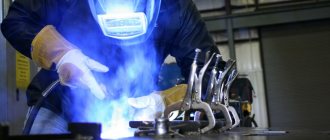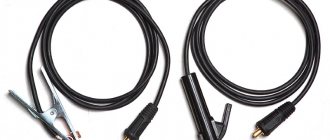There are various ways to clean metal and wooden surfaces. Petal circles are characterized by high efficiency in solving this problem.
There are many varieties of this device, but their principle of use is similar - removing the top layer of the surface being treated due to the influence of the abrasive component located on the base of the wheel.
Design Features
Flap-type wheels are used when cleaning metal workpieces from corrosive deposits or paint, when processing seams after welding, or to remove burrs on metal if cutting or stamping is used. Excellent results can also be obtained when preparing wood products for paint and varnish processing.
This tool provides high quality abrasive machining of parts. It is similar in appearance to a standard grinding wheel, but it has one important difference. Along the edges there are petals of sandpaper, as can be seen in the photo of the petal circle.
This design provides a number of advantages when grinding:
- high durability of the tool, since the petals are used evenly, and the service life is extended until the sandpaper is completely abraded;
- Possibility of use for processing planes of a complex configuration, because the petals are flexible and soft;
- application in the processing of metal, wood, plastic and other types of material;
- The removal of a layer of material from the sanded surface is very high quality.
Circle for grinder
These grinding devices vary in size. You can select a wheel for different angle grinder configurations – large and small. Their diameter varies between 115-230 mm and is selected depending on the size of the unit.
Read here: Types of jigsaw files: features of choosing the shape and type of cutting part
The standard socket diameter is 22.23 mm, and the disk thickness will be 1.2-2.0 mm. You should focus on these features if you do not know how to choose a petal circle.
There are differences in the degree of grain size - grains 40, 60, 80, 120. If according to Russian standards a larger numerical value of the marking means a larger grain (for example, it is 120), then according to foreign standards the situation is the opposite - a larger number means less grain.
Marking of grinding wheels
The qualitative characteristics of abrasive wheels are regulated by GOSTs, standards and technical conditions. Each of the grinding wheels has its own marking according to the following characteristics:
- Sanding material
- Disc size
- Grain size
- Disk type
- Hardness degree
- Binder
- Instability class
- Structure
- Segments
- Optimal rotation speed
To decipher these points, it is necessary to consider the markings of grinding wheels in more detail.
Type of grinding abrasive
The most common markings of abrasive wheels by type of material are as follows:
Marking 12A, 13A, 14A, 15A, 16A: normal electrocorundum (material with high heat resistance, good adhesion to the binder, mechanically strong grains). Suitable for processing wrought iron, cast iron, steel, bronze, chrome steel.
22A, 23A, 24A, 25A: white electrocorundum (more uniform than type 14A, harder, with sharp edges, has the property of self-sharpening, provides a more uniform surface of the processed material). Used for sharpening and grinding tool steel, thin-walled parts and tools, as well as finishing and finishing.
Marking of abrasive wheels
32A, 33A, 34A: chromium electrocorundum.
37A: titanium electrocorundum.
38A: zirconium. The higher the marking, the higher the strength of the discs.
Marking 52-55C: black silicon carbide (has increased hardness compared to the previous type of abrasive, and brittleness). Used for polishing cast iron, granite, porcelain, silicon, ceramic, glass surfaces, as well as viscous aluminum, copper, rubber materials, and heat-resistant steel products.
Marking 62С,63С,64С: green silicon carbide. It differs from black in being more fragile.
Marking CBN, CBN, cubonite, borazone: has the strength of diamond, but greater heat resistance.
Marking of diamond wheels: AC2 (regular strength), AC4 (high strength), AC6 (high strength), AC32 (single crystals), AC50, ARB1, ARK4, APC3. They have the highest wear resistance, strength, and low fragility. Diamond wheels are used in processing brittle and high-hard alloys (cast iron, ceramics, silicon, optical glass), as well as finishing grinding, cutting, and sharpening carbide tools.
Grinding wheels, grit (marking)
A characteristic such as grain size determines the smoothness of the processed surface. The grain size of the grinding disc determines its wearability, the thickness of the metal layer removed in one pass, etc. The smaller the value of one grain, the smoother and cleaner the processed surface will be.
The grain size determines the marking of the discs:
- Grinding: grain size ranges from No. 200 to No. 16
- Sanding powder: №№12-4
- Micro sanding powder: M63-M14
- Fine micro-grinding powder: M10-M5.
The grain size units are given in µm. The marking of diamond grinding wheels, or more precisely, the type of their grain size, is indicated in a different way (through the fraction of the upper and lower values).
Grinding wheel grit markings
Circle size
Disc sizes are regulated by GOST 2424-75. Marking D is a numerical designation of the outer diameter, d is the inner diameter, h is the height (width). The outer diameter can vary in the range of 3-1100 mm, the inner diameter from 1.0 to 305 mm, and the height from 0.18 mm to 250 mm.
Instability class (imbalance)
There is a designation for four classes of imbalance (from 1 to 4), i.e. permissible values of disc deviation from static balance. The imbalance class denotes the ratio of the mass of the abrasive disc to the accuracy of its geometric shape. Therefore, often the unbalance and accuracy markings are indicated side by side. Accuracy class A is used for working on high-precision equipment, class B is more universal, AA - discs of ideal shape and geometry made of very high quality abrasive.
Read also: Contacts for magnetic starters
Structure
The density of the structure is indicated depending on the ratio of the number of abrasive grains to the volume of the disk. The more abrasive per unit volume of the grinding wheel, the denser its structure. If a tool is sharpened, a disk with a less dense structure is better able to clean the surface from material particles, creates less risk of deformation, and cools faster.
The numerical designation of the structure is as follows:
1,2,3,4 – dense structure;
5,6,7 – medium density;
Marking of grinding wheels: old and new, difference according to GOST
Until 2008, the conditional indicators of disks were regulated in accordance with GOST 2424-83. Since 2008, a new edition of GOST 2424 came into force. In 2009, marking of abrasive wheels began in a new way: modern standards for the symbol of hardness of a processing tool (GOST 52587-2006 instead of the old GOST 18118, 19202, 21323), grain size ( GOST 52381-2005 instead of GOST 3647-80), ligaments (new GOST 52588-2006).
Also, modern indicators of types of grinding wheels differ from those adopted in the USSR. The existing designation of grinding wheels is as follows (the previously used designation is indicated in parentheses):
- – cross-section of a straight profile circle (PP). Suitable for universal use
5 – straight profile with one-sided groove (PV). Used for cylindrical grinding.
7 – with two grooves (PVD)
10 – with hub and double-sided recess
6 – cylindrical cup-shaped (CC). Used for sharpening tools. 36 – with fasteners (PN)
11 – conical cup-shaped (CC)
41 – cutting disc type
4 – with a double-sided conical profile (2P)
- – type with conical profile (3P)
12.14 – disc-shaped (T,1T).
Flap grinding wheels are marked with the type, outer diameter, inner diameter, height, grit size and series of abrasive paper.
Marking by type of bundle
The bond holds the grinding grains to the base and to each other. Typically, three types of bond markings are indicated on the discs: vulcanite, ceramic and bakelite.
The first type of connective is designated as R, or the outdated designation “B”. It consists of synthetic rubber that has been subjected to a vulcanization process.
The ceramic bond is marked as V, the former name was “K”. It includes a compound of inorganic substances (clay, quartz). Its advantages are wear resistance, thermal and chemical stability, but at the same time fragility.
The bakelite bond is marked as B, formerly known as "B4" and "BU". It contains artificial resins. This is an elastic ligament, but otherwise the parameters are lower than those of a ceramic one.
Hardness indicators
The hardness indicator of a grinding wheel indicates the strength of the grains being held by the bond on the surface when the disc is exposed to the abrasive being processed.
Disc hardness designations start from very soft (BM1, BM2) to extremely hard (CHT), in the new designation the marking is carried out with letters of the English alphabet, starting from F (very soft) to Z (extremely hard).
Most often, disks of medium hardness are used, but the choice of type of degree depends on the type of work being performed, the surface of the material, and the tool itself.
Grain
According to the previously valid GOST, the marking of the degree of granularity was expressed in measuring the number of grains in a volume of 10 microns; for micro-grinding powder, these values were expressed by adding the letter “M”. The new standard establishes the designation with the letter "F" with the addition of a number that indicates the degree of grit. The larger it is, the less grain and vice versa.
Grinding flap discs are used for preliminary and final processing of products. The grain size of the wheels is from 40 to 2500, the abrasive material is zirconium and electrocorundum. The diameter of the circles is from 15 to 500 mm. High quality products ensure low vibration and high equipment performance. Show good results when processing durable materials and thin sheets, seams and internal cavities. They are used to equip hand tools and stationary equipment, for straight and angle grinders.
Drill circle
In order for the disc to be fixed on the power tool, a special pin is located in the center of the circle. Thanks to him, the petal circle is clamped in the cartridge.
You can use a drill for grinding work, but it is not entirely convenient. Therefore, this approach is used only for small-scale work.
Flap wheels for drills are usually of small diameters - 60 or 80 mm. The grain size can be coarse or fine – from 40 to 80. The thickness is 20 mm.
For machine applications
Such circles are used in woodworking in factories or at home on woodworking machines. Their diameter is large:
- 120 mm with an internal bore diameter of 12 mm and a thickness of 30 mm;
- 150 mm with a 32 mm fit and a thickness of 30 or 50 mm;
- 300 mm - have an internal hole diameter of 44.5 mm, and the thickness of the discs is 50 or 100 mm.
The base of the emery coating is fabric, the fastening to the disk body is standard - using resin. The grain size varies between 4H-40H.
Educational program on flap wheels for sanding wood
The petal circle is a circle of sandpaper petals glued on top of each other, overlapping each other. Most often on sale you can find an END model, which is designed to work with an angle grinder. Although they are also available for use with a drill (they have a pin for fastening in the chuck). Well, there are also healthy options with a fit of 32 and 50 mm. We will talk about all types. Oh yes, the main task of such a tool is to sand wood, although you can also “scrape” metal.
For an angle grinder
The grain size of the sandpaper on the wheel varies, so you can easily select the right grain for the intended work. The most commonly purchased wheels are the following grain sizes:
— P40 (largest) — P60 (slightly smaller) — P80 (medium) — P100 (medium-fine) — P120 (small)
Diameters of petal circles for an angle grinder:
— 115 mm — 125 mm — 150 mm — 180 mm
As you can see, you can select the desired diameter of the flap wheel for any angle grinder. The design of the wheel involves using the entire area of sandpaper when sanding the surface. First of all, it is very convenient to “sand” wood with such a disc; most often it is used when preparing wood for painting, to remove old varnish, and very often our customers take such discs for finishing processing of log houses (when the inside of the log house walls are clean, smoothly sanded and coated varnish). This interior decoration looks just super.
One disc for a small grinder can process up to 8 square meters of wooden surface. The flap wheel is attached to the grinder using a washer, just like a regular cutting wheel.
The number of revolutions required for the disc to work is decent, for 115 mm 13000 revolutions, which means that it can be used as an angle grinder without adjusting the speed.
For drill
In addition to flap wheels for grinders, you can find drill wheels on sale. They differ from the Bulgarian ones in that they have a pin for fastening in the chuck.
Dimensions of “drill” models:
— diameter 80 mm, width 20 mm — diameter 60 mm, width 20 mm
Wheel grits are 16-H, 25-H and 40-H. (small, medium and large). They look like this:
Another note: How to drill holes for hinges? Forstner, of course!
With the help of such small circles, you can treat hard-to-reach surfaces that cannot be reached with a regular grinder. And in such cases, when there is no grinder at home, they will also help.
For machines
For industrial wood processing, radial models are used - healthy in diameter and with a large mounting hole.
They are larger in size and are used in special woodworking machines.
Dimensions:
— Diameter 150 mm, width 30 mm and 50 mm, fit 32 mm. — Large circles with a diameter of 300 mm and a width of 50 mm and 100 mm, fit 50 mm. — In terms of grit size, the choice is decent, it includes all sandpaper grains, ranging from 4-N to 40-N.
Such huge circles are used to process wood very quickly, since the area of the wood being processed is quite large. It is quite difficult to find such models for sale; not all tool stores offer such products.
Features of use
If you do not know how to use a petal circle, then you need to study the safety rules in detail:
Choosing a blade for a hacksaw for metal: rating the best blades, choosing and using the best toolReview of drills and hammer drills - testing, comparative characteristics and evaluation of popular models
Review of diamond bits for concrete: subtleties of choosing and using tools for high-quality drilling
- the wheel and the tool used must be in good working order;
- it is necessary to check the petals for integrity and absence of damage;
- You need to select the rotation speed in accordance with the markings of the disk;
- should be firmly attached to the instrument, avoiding distortions;
- checking the tool idle is mandatory - rotation must be smooth and uniform;
- Avoid excessive load and pressure;
- idle rotation at the end of work will clear the disk of coolants;
- When working, use protective clothing, glasses and other equipment.
The flap wheel provides high-quality grinding of various surfaces before coating. You can work with an angle grinder, a drill or on a machine, but you need to choose the right type of device.
Circle grain
Petal circles are distinguished by grain size. There are several standard grain sizes - 40, 60, 80, 120. In accordance with Russian standards, the higher the number, the larger the grain diameter. According to foreign nomenclature, on the contrary, a larger number corresponds to a finer grain.
Read also: Tool for drilling holes in concrete
When choosing a wheel, you must remember that with a high grain size, the processing will become rougher and the processed surface will be rougher.
